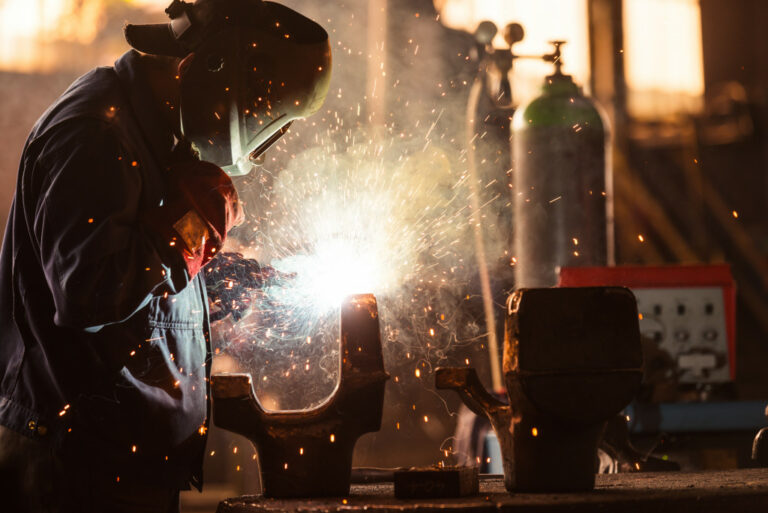The US manufacturing industry is an integral part of the nation’s economy and a significant contributor to job growth. In 2019, the US manufacturing industry accounted for 11.39% of the country’s GDP. Yet, despite its importance, the US manufacturing industry faces many challenges that could affect its ability to remain competitive in a global market. Let’s take a look at four of these challenges.
Labor Shortage
The aging workforce poses one of the biggest threats to the US manufacturing industry, as many experienced workers are nearing retirement age and are not being replaced by younger generations. According to MarketWatch, around 10,000 baby boomers retire daily in the United States, leaving skilled positions vacant with no one to fill them. This issue is compounded by the fact that many potential workers lack the skills needed for modern manufacturing processes and technologies or are unwilling to take on such jobs due to low wages or unfavorable working conditions.
Competition from Overseas
The rise of global trade has enabled businesses outside the United States to become more competitive in terms of cost and quality when it comes to manufactured goods. Low-wage countries like China have the edge over American manufacturers because they can produce goods more cheaply and often without complying with labor regulations or environmental standards that U.S.-based companies must adhere to. As a result, American manufacturers must find ways to compete with overseas producers while maintaining their commitment to quality and safety standards set forth by governing bodies like OSHA and EPA.
Technology Advancement
Technological advancements have enabled manufacturers worldwide to produce higher-quality products faster than ever before—and this trend shows no signs of slowing down anytime soon. As a result, companies need to invest in new technology to remain competitive in terms of speed and accuracy.
However, this can be difficult for small businesses that may not have access to capital for such investments or expertise on how best to utilize these modern tools and processes. Additionally, some companies may fear automation replacing human labor altogether, although this is not true—automation can help enhance efficiency while keeping labor costs down at the same time if used correctly.

Inconsistent Cost Structure
The cost structure for raw materials used in U.S.-manufactured products can be highly volatile due to shifts in global demand or changes in economic conditions, making it difficult for manufacturers who rely on these materials as part of their production process. In addition, in some cases, U S companies are forced to pay higher prices than foreign competitors due to laws protecting domestic suppliers or tariffs imposed on imported materials from abroad. This could lead American manufacturers to pay more than they should, while international competitors benefit from lower costs, resulting in significant losses and potential sales opportunities.
3 Technologies That Can Help the U.S. Manufacturing Industry
The US manufacturing industry is an integral part of America’s economy. However, it faces many challenges that could hinder its ability to stay competitive long term. From potential labor shortages due aging workforce and uncertain cost structures of raw materials, several issues must be addressed to ensure sustainability and success in the future. Through strategic investments in modern technology, the manufacturing industry can deal with its recent challenges. Here are some technologies that can help deal with these challenges.
Improved RAM
RAM is an essential component of modern manufacturing processes, as it helps to ensure that machines operate smoothly and efficiently. Manufacturers can improve overall efficiency while reducing costs by investing in newer, more advanced RAM technologies.
Currently, there is MRAM in industrial computing that can facilitate faster and more accurate data transfer, resulting in better manufacturing processes and outcomes. This can drastically increase the efficiency of many factories.
Automation and Robotics
Robotics and automation are often seen as a way to reduce costs by eliminating labor costs and increasing production efficiency. Automated processes allow manufacturers to produce more complex products faster, which helps them stay competitive in an increasingly global market. Additionally, robots can be programmed to do repetitive tasks such as welding or assembly line work, freeing up human workers for more creative tasks.
Advanced-Data Analytics
Data analytics is one of the most valuable tools for any business, but it’s especially important for those in the manufacturing industry. Data analytics helps manufacturers gain insights into their production lines and identify areas where improvements can be made. It also allows them to track performance metrics such as product quality and customer satisfaction so they can adjust their processes accordingly.
Technology can be a powerful tool for the US manufacturing industry, helping to address many of its current challenges. By investing in new and innovative technologies, manufacturers can continue to compete and succeed in the modern economy. This way, they can ensure a bright future for the US manufacturing industry.




